IEEE-SA Standards Board
Introduction
Participants
Contents
1. Overview
1.1 Scope
1.2 Purpose
2. References
3. Definitions, acronyms, and abbreviations
3.1 Definitions
3.2 Acronyms and abbreviations
4. Structure of this standard
5. STIL orientation and capabilities tutorial
5.1 Hello Tester
5.1.1 STIL grammatical constructs
5.1.2 Complexity and language subsets
5.2 Basic LS245
5.3 STIL timing expressions/”Spec” information
5.4 Structural test (scan)
5.5 Advanced scan
5.5.1 Scan data merging
5.6 IEEE Std 1149.1-1990 scan
5.7 Multiple data elements per test cycle
5.7.1 Burst or pipelined data
5.7.2 Serial data
5.7.3 Multiple bit restrictions
5.8 Pattern reuse/direct access test
5.8.1 Background
5.9 Event data/non-cyclized STIL information
5.9.1 Pure event data
5.9.2 Mixed event and pattern data in STIL
5.9.3 Fully cyclized data
6. STIL syntax description
6.1 Case sensitivity
6.2 Whitespace
6.3 Reserved words
6.4 Reserved characters
6.5 Comments
6.6 Token length
6.7 Character strings
6.8 User-defined name characteristics
6.9 Domain names
6.10 Signal and group name characteristics
6.11 Timing name constructs
6.12 Number characteristics
6.13 Timing expressions and units (time_expr)
6.14 Signal expressions (sigref_expr)
6.15 WaveformChar characteristics
6.16 STIL name spaces and name resolution
7. Statement structure and organization of STIL information
7.1 Top-level statements and required ordering
7.2 Optional top-level statements
7.3 STIL files
8. STIL statement
8.1 STIL syntax
8.2 STIL example
9. Header block
9.1 Header block syntax
9.2 Header example
10. Include statement
10.1 Include statement syntax
10.2 Include example
10.3 File path resolution with absolute path notation
10.4 File path resolution with relative path notation
11. UserKeywords statement
11.1 UserKeywords statement syntax
11.2 UserKeywords example
12. UserFunctions statement
12.1 UserFunctions statement syntax
12.2 UserFunctions example
13. Ann statement
13.1 Annotations statement syntax
13.2 Annotations example
14. Signals block
14.1 Signals block syntax
14.2 Signals block example
15. SignalGroups block
15.1 SignalGroups block syntax
15.2 SignalGroups block example
15.3 Default attribute values
15.4 Translation of based data into WaveformChar characters
16. PatternExec block
16.1 PatternExec block syntax
16.2 PatternExec block example
17. PatternBurst block
17.1 PatternBurst block syntax
17.2 PatternBurst block example
18. Timing block and WaveformTable block
18.1 Timing and WaveformTable syntax
18.2 Waveform event definitions
18.3 Timing and WaveformTable example
18.4 Rules for timed event ordering and waveform creation
18.5 Rules for waveform inheritance
19. Spec and Selector blocks
19.1 Spec and Selector block syntax
19.2 Spec and Selector block example
20. ScanStructures block
20.1 ScanStructures block syntax
20.2 ScanStructures block example
21. STIL Pattern data
21.1 Cyclized data
21.2 Multiple-bit cyclized data
21.3 Non-cyclized data
21.4 Scan data
21.5 Pattern labels
22. STIL Pattern statements
22.1 Vector (V) statement
22.2 WaveformTable (W) statement
22.3 Condition (C) statement
22.4 Call statement
22.5 Macro statement
22.6 Loop statement
22.7 MatchLoop statement
22.8 Goto statement
22.9 BreakPoint statements
22.10 IDDQTestPoint statement
22.11 Stop statement
22.12 ScanChain statement
23. Pattern block
23.1 Pattern block syntax
23.2 Pattern initialization
23.3 Pattern examples
24. Procedures and MacroDefs blocks
24.1 Procedures block
24.2 Procedures example
24.3 MacroDefs block
24.4 Scan testing
24.5 Procedure and Macro Data substitution
Annex A
Annex B
Annex C
Annex D
Annex E
Annex F
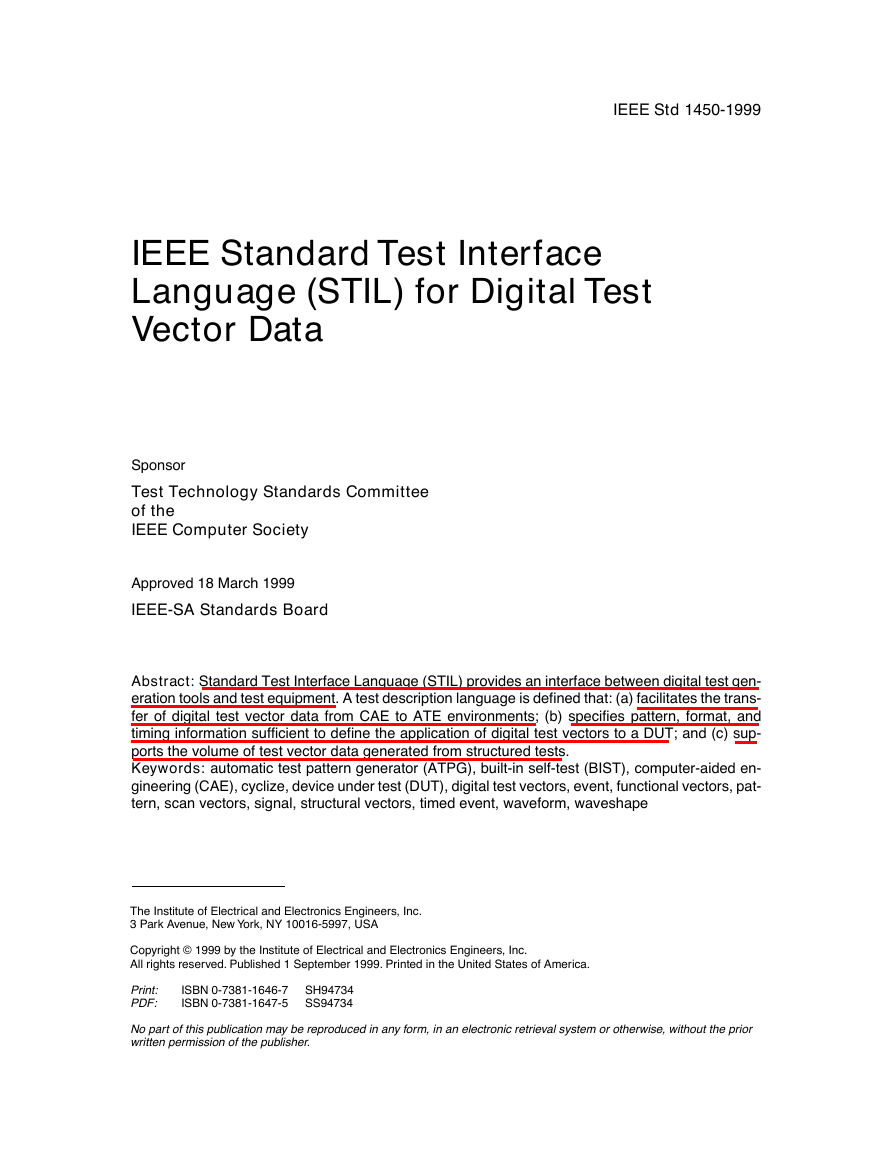
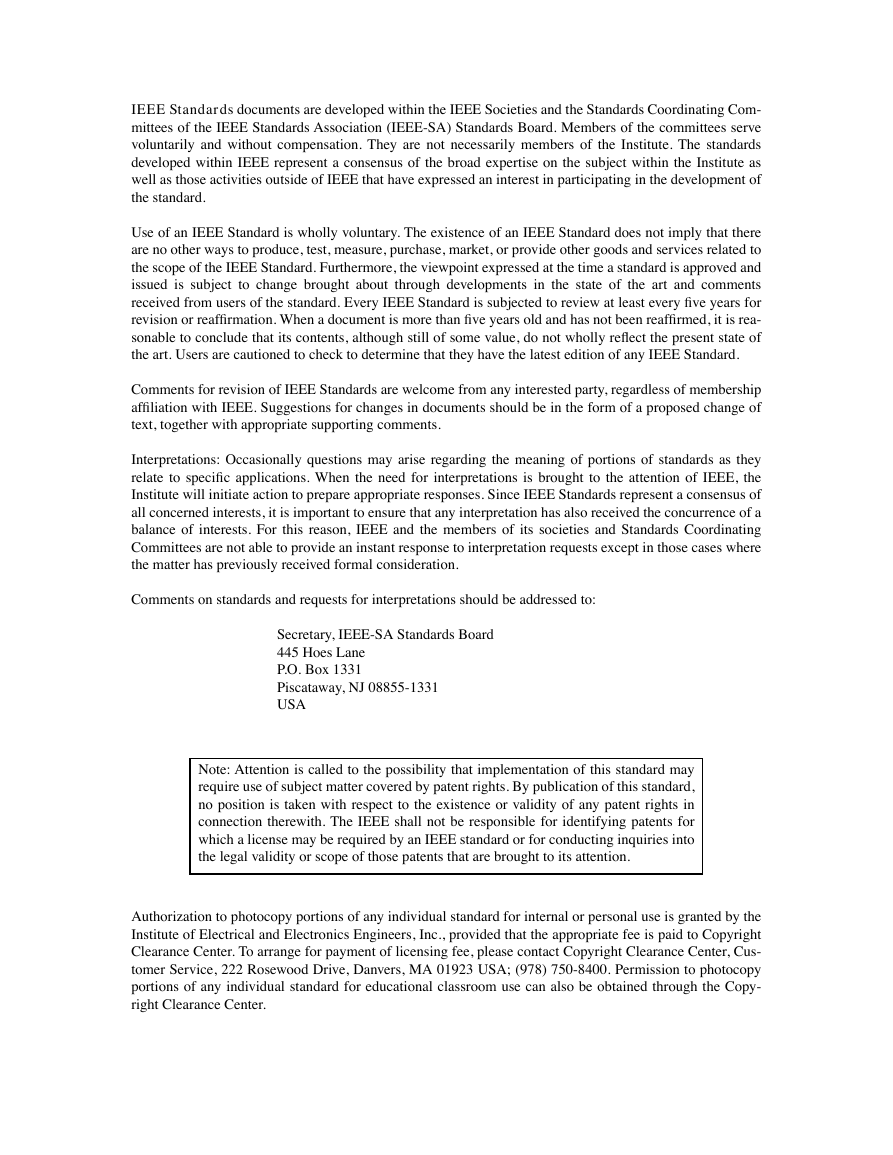
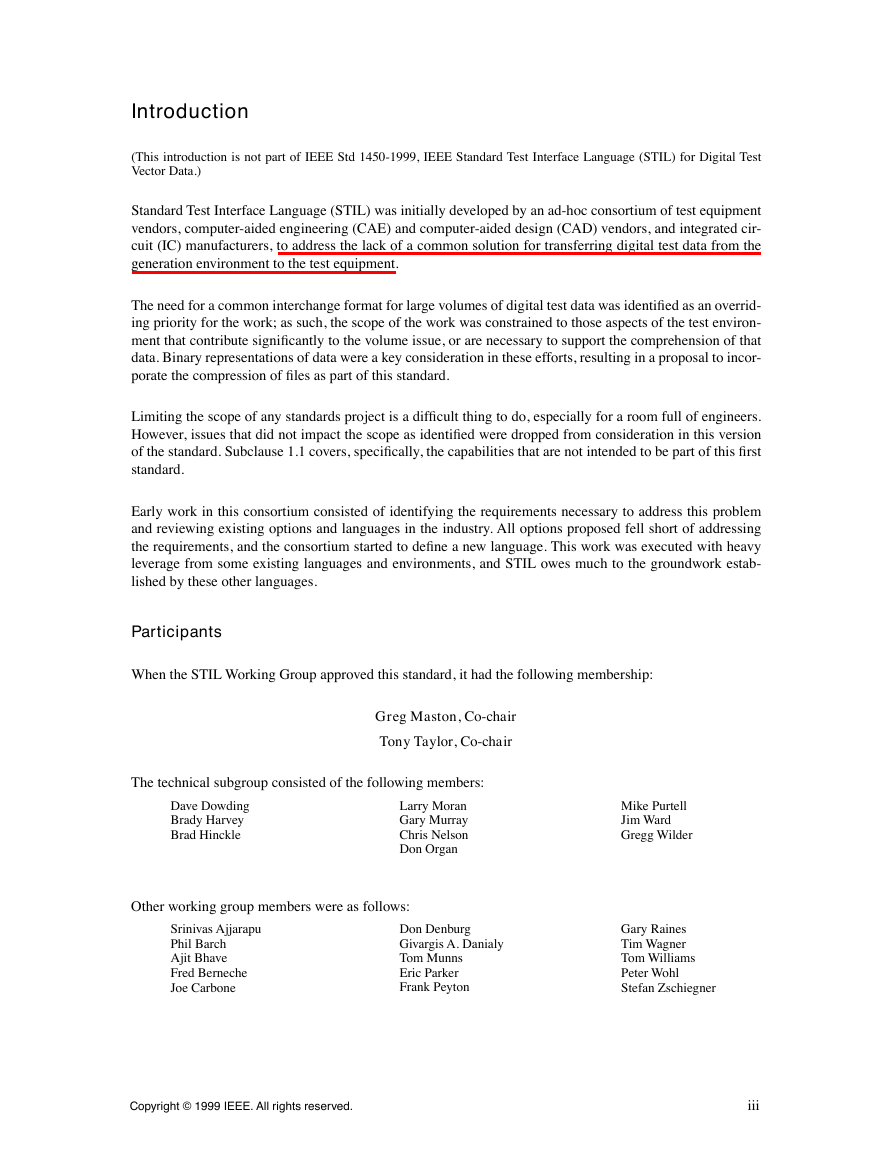
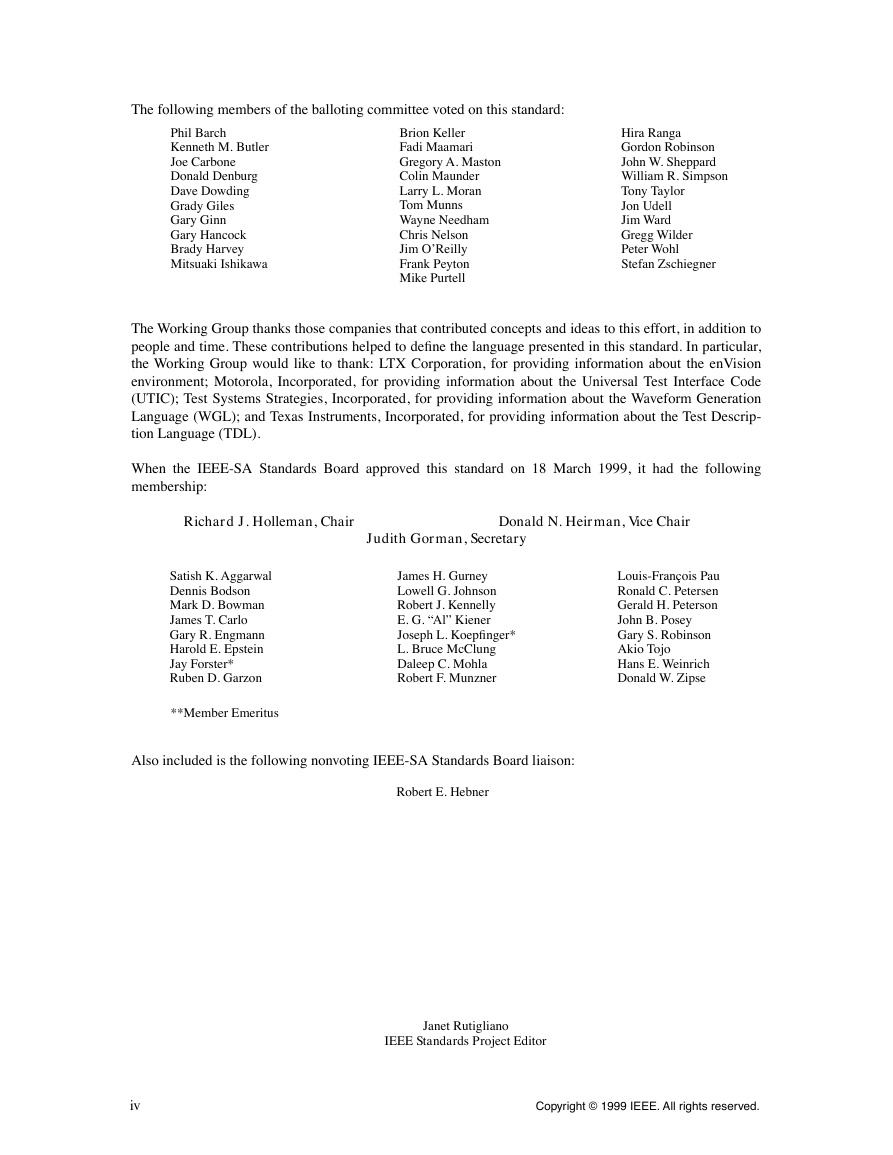
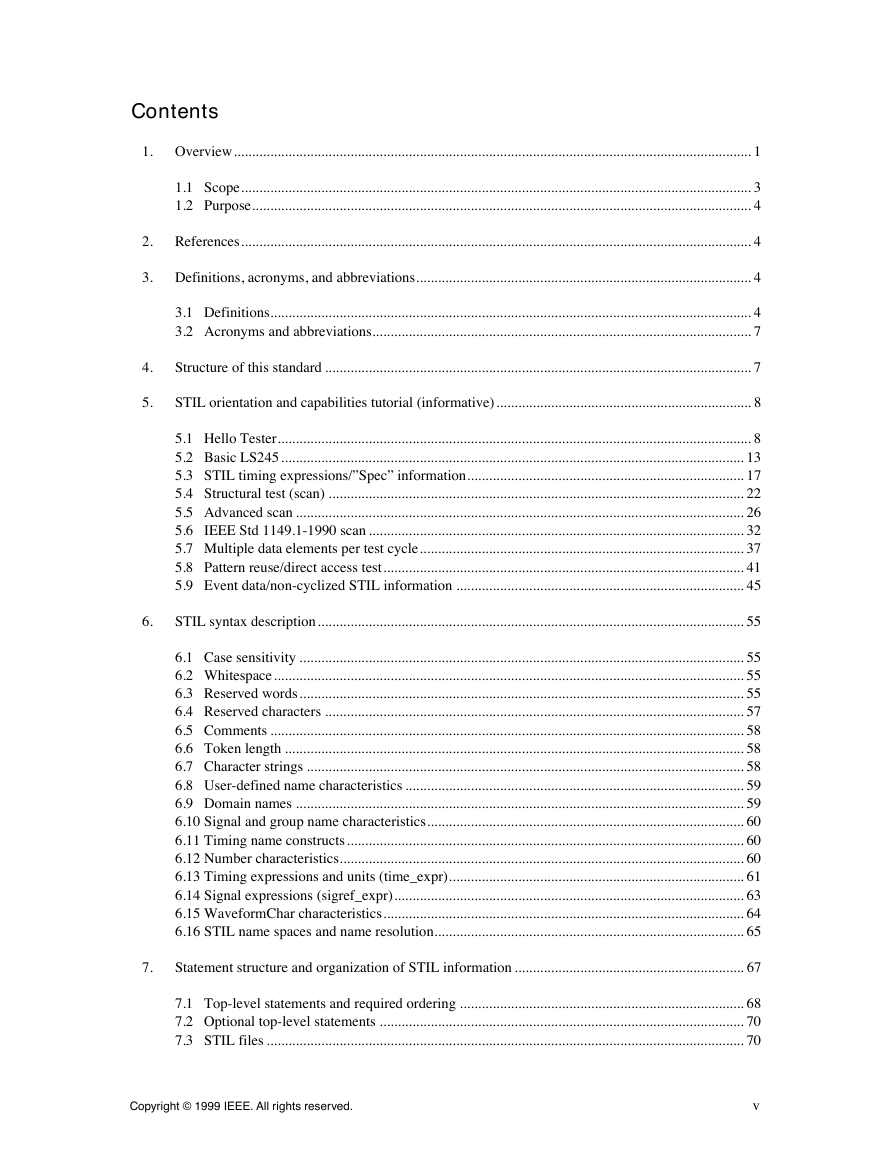
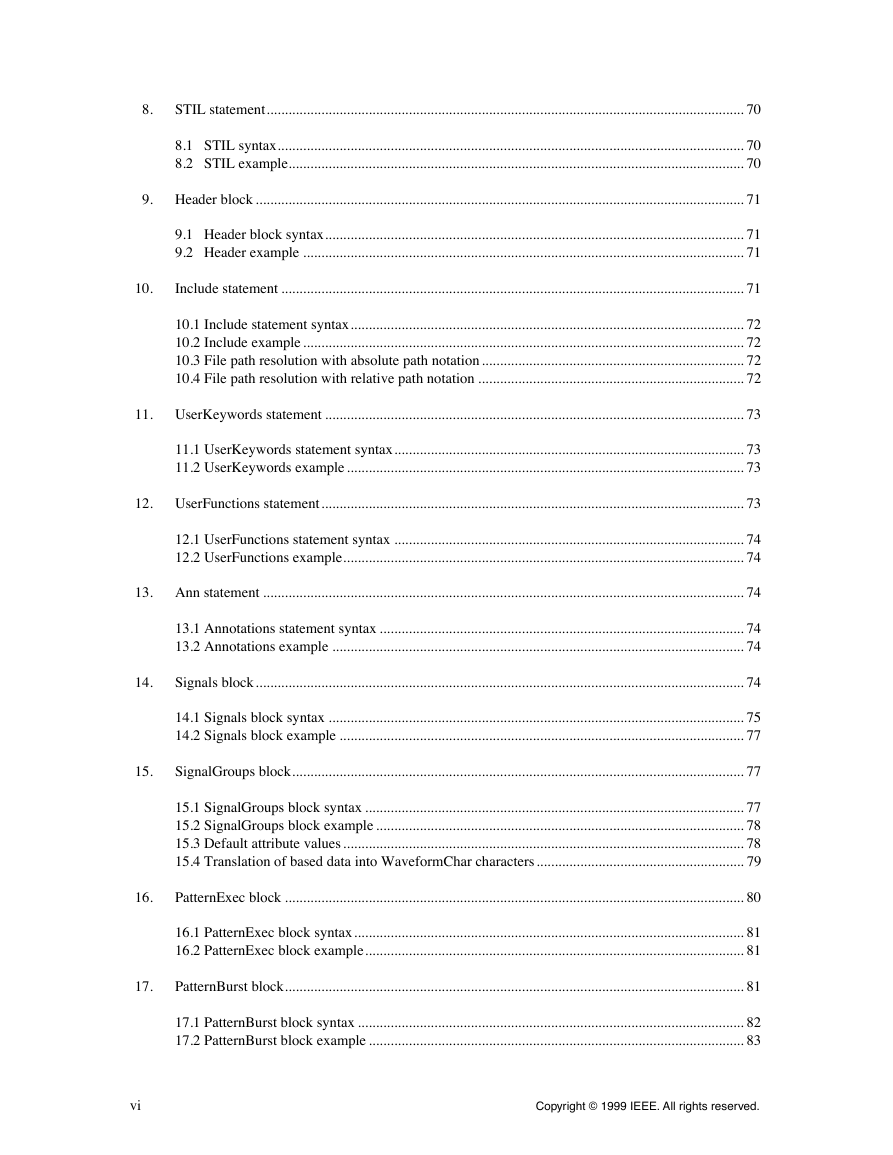
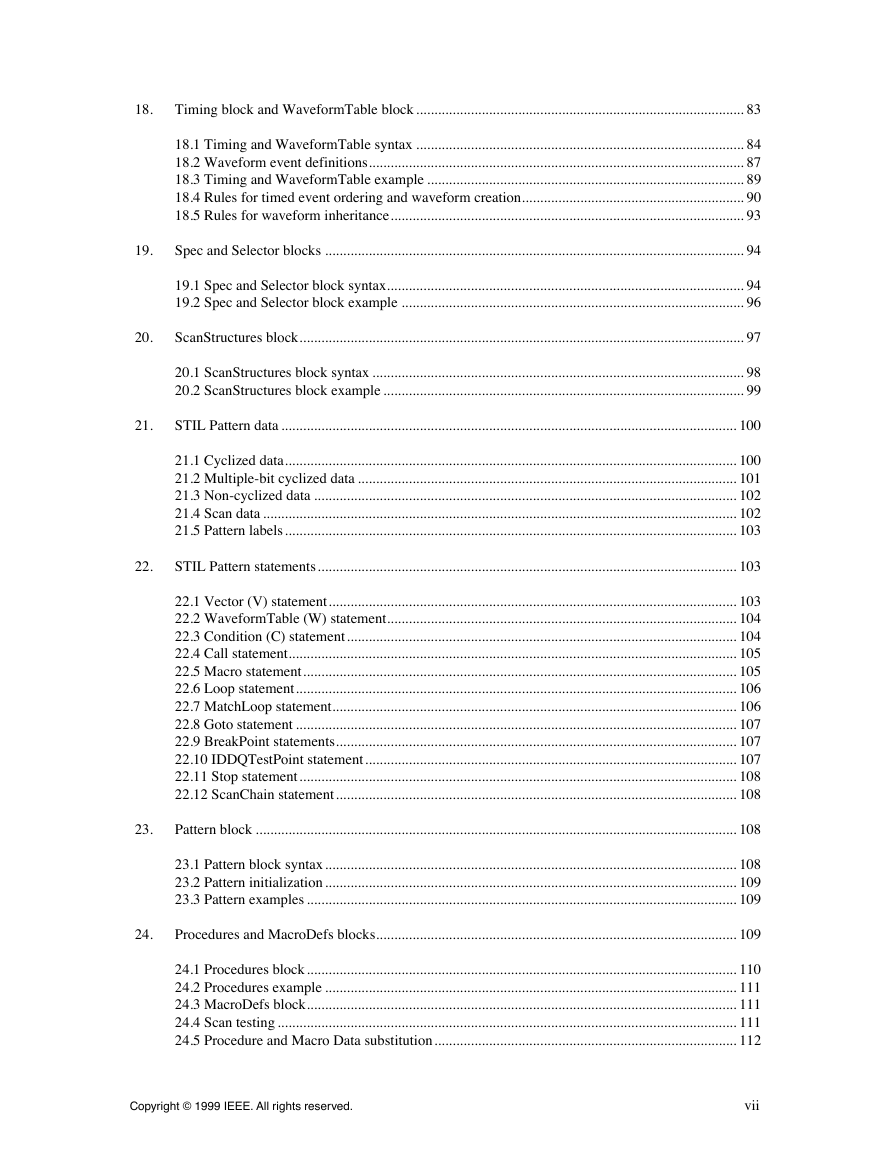
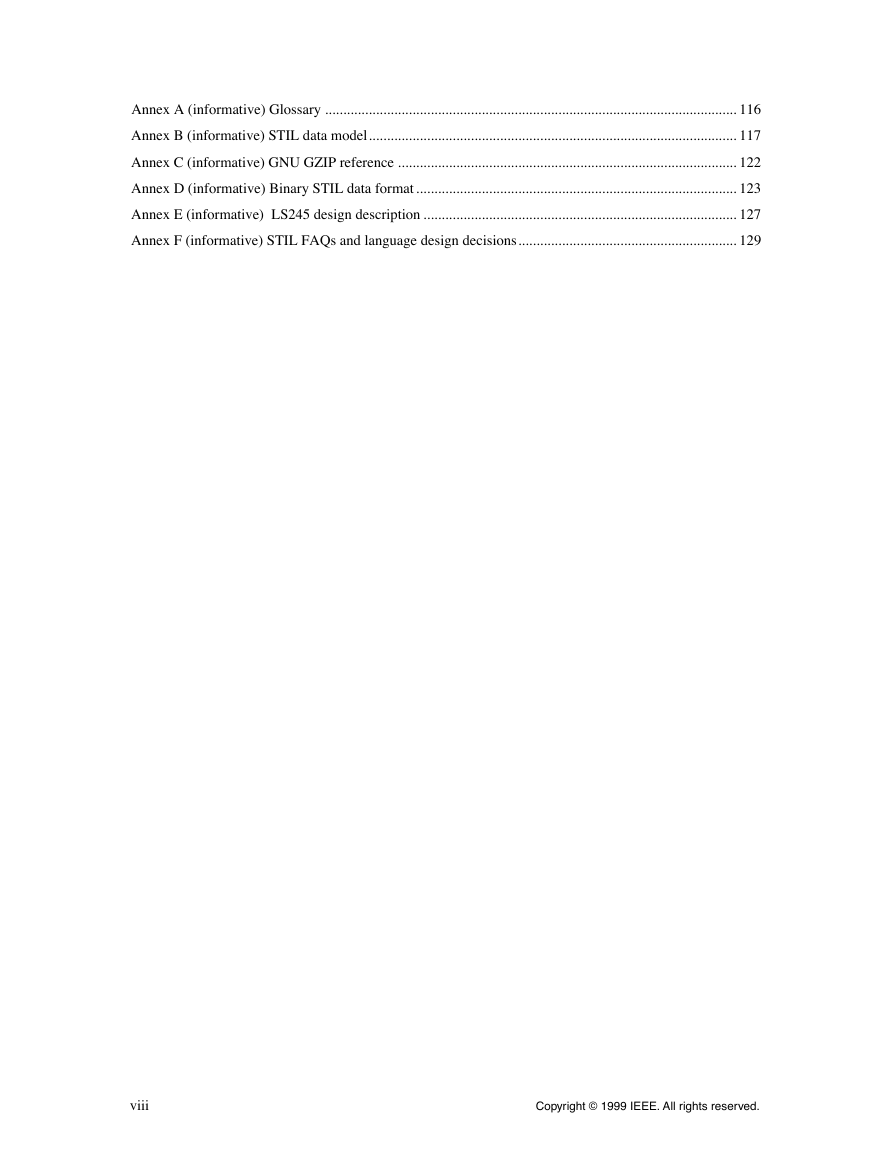








 2023年江西萍乡中考道德与法治真题及答案.doc
2023年江西萍乡中考道德与法治真题及答案.doc 2012年重庆南川中考生物真题及答案.doc
2012年重庆南川中考生物真题及答案.doc 2013年江西师范大学地理学综合及文艺理论基础考研真题.doc
2013年江西师范大学地理学综合及文艺理论基础考研真题.doc 2020年四川甘孜小升初语文真题及答案I卷.doc
2020年四川甘孜小升初语文真题及答案I卷.doc 2020年注册岩土工程师专业基础考试真题及答案.doc
2020年注册岩土工程师专业基础考试真题及答案.doc 2023-2024学年福建省厦门市九年级上学期数学月考试题及答案.doc
2023-2024学年福建省厦门市九年级上学期数学月考试题及答案.doc 2021-2022学年辽宁省沈阳市大东区九年级上学期语文期末试题及答案.doc
2021-2022学年辽宁省沈阳市大东区九年级上学期语文期末试题及答案.doc 2022-2023学年北京东城区初三第一学期物理期末试卷及答案.doc
2022-2023学年北京东城区初三第一学期物理期末试卷及答案.doc 2018上半年江西教师资格初中地理学科知识与教学能力真题及答案.doc
2018上半年江西教师资格初中地理学科知识与教学能力真题及答案.doc 2012年河北国家公务员申论考试真题及答案-省级.doc
2012年河北国家公务员申论考试真题及答案-省级.doc 2020-2021学年江苏省扬州市江都区邵樊片九年级上学期数学第一次质量检测试题及答案.doc
2020-2021学年江苏省扬州市江都区邵樊片九年级上学期数学第一次质量检测试题及答案.doc 2022下半年黑龙江教师资格证中学综合素质真题及答案.doc
2022下半年黑龙江教师资格证中学综合素质真题及答案.doc